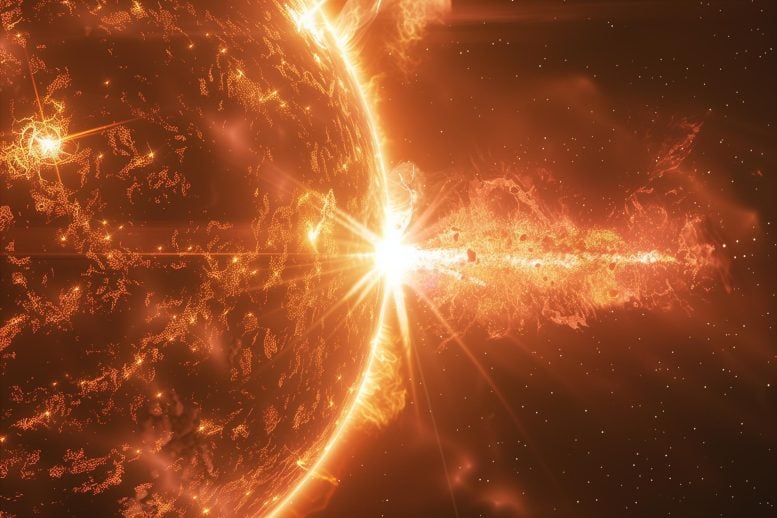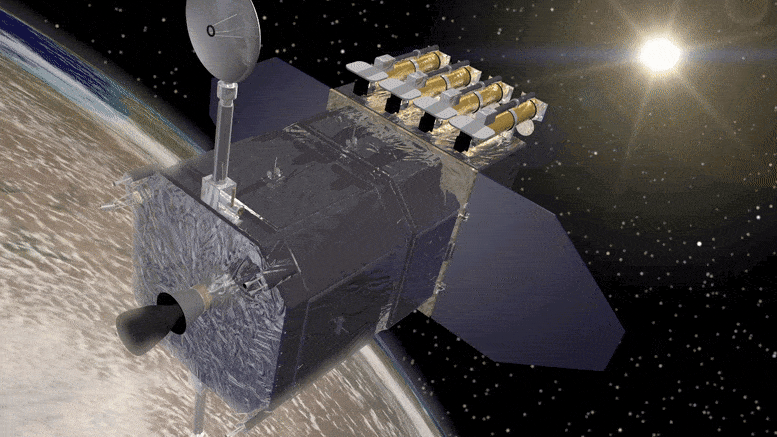
Between May 3 and 9, 2024, NASA found 82 solar flares, which are strong bursts of energy from the Sun that can affect space technology and astronauts, even though Earth has a protective atmosphere. This information comes from SciTechDaily.com.
From May 3 to May 9, 2024, The Solar Dynamics Observatory of NASA saw 82 significant solar flares. These flares mostly came from two active areas on the Sun known as AR 13663 and AR 13664. A video shows all flares classified at M5 or higher, with nine of them being X-class solar flares.
A solar flare is a strong burst of radiation or light from the Sun. Flares are the most powerful explosive events in our solar system. It only takes about 8 minutes for light from a flare to reach Earth.
Solar flares are put into different categories based on their strength or energy output, and the impact of a flare on Earth depends on its category (B, C, M, and X, with X being the most intense). Most of the Sun's intense radiation is absorbed by Earth's atmosphere, so flares don't directly harm people on the ground. However, the radiation from a flare can be dangerous for astronauts outside of Earth and can affect our technology.
More powerful solar flares, those in the class M5 or higher, can affect technology that relies on Earth's ionosphere, such as high-frequency radio used for navigation and GPS.
For information about how space weather could affect Earth, please visit NOAA's Space Weather Prediction Center, the official source for space weather forecasts, watches, warnings, and alerts. NASA contributes to the nation's space weather efforts as a research organization. NASA constantly observes the Sun and space around Earth with a group of spacecraft that study various aspects of the Sun and the space environment, including the solar atmosphere, particles, and magnetic fields.

This animation of the Solar Dynamics Observatory shows the observatory above Earth, facing the Sun. SDO's purpose is to help us understand how the Sun affects Earth and space nearby by studying the solar atmosphere on small scales of space and time and using many wavelengths at once.
The primary goal of NASA's Solar Dynamics Observatory (SDO) is to understand how the Sun impacts Earth and the space nearby by observing the solar atmosphere in different wavelengths. Launched in February 2010, SDO is part of NASA's Living With a Star (LWS) program, which aims to develop the necessary scientific understanding to address aspects of the connected Sun-Earth system that directly affect life and society.
SDO provides detailed images of the Sun in 13 different wavelengths every 10 seconds. This allows for thorough monitoring of solar activity, including solar flares, which are sudden, strong bursts of energy that come from the release of magnetic energy associated with sunspots. Solar flares are important because they can release huge amounts of energy that heat up the solar atmosphere, increase solar brightness, and produce heightened radiation that can have significant effects on Earth. This includes potential impacts on satellite operations, communications systems, and even power grids, especially during intense flares.
SDO’s information is very important for understanding how solar flares work and how they form. It helps scientists make their models of the sun's atmosphere better and predict space weather events more accurately. By giving a steady flow of data, SDO is crucial for our ability to predict and lessen the impact of solar activity on modern technology.



